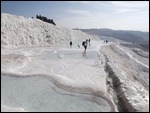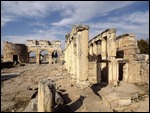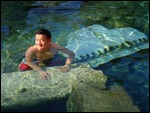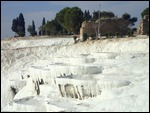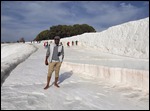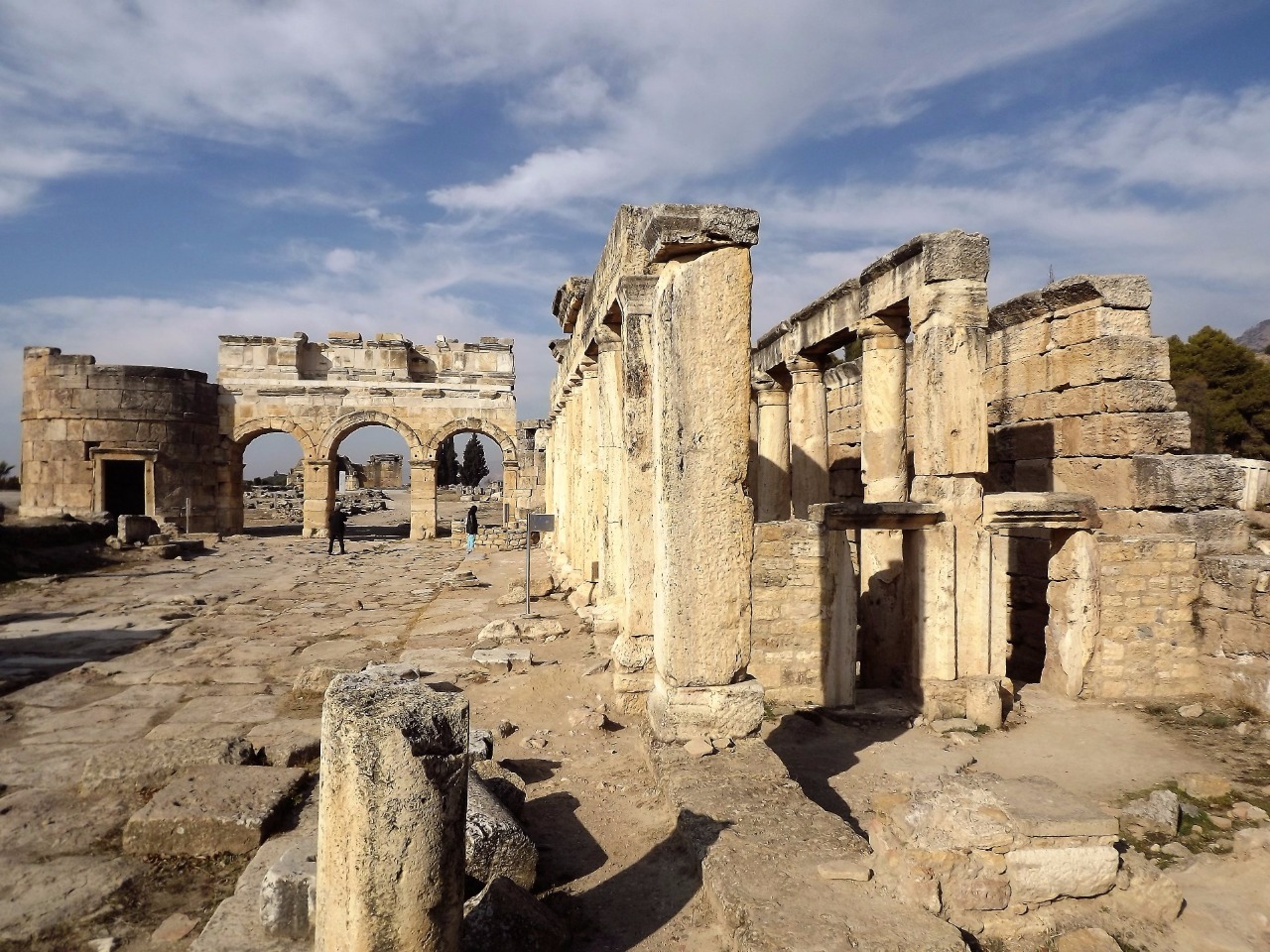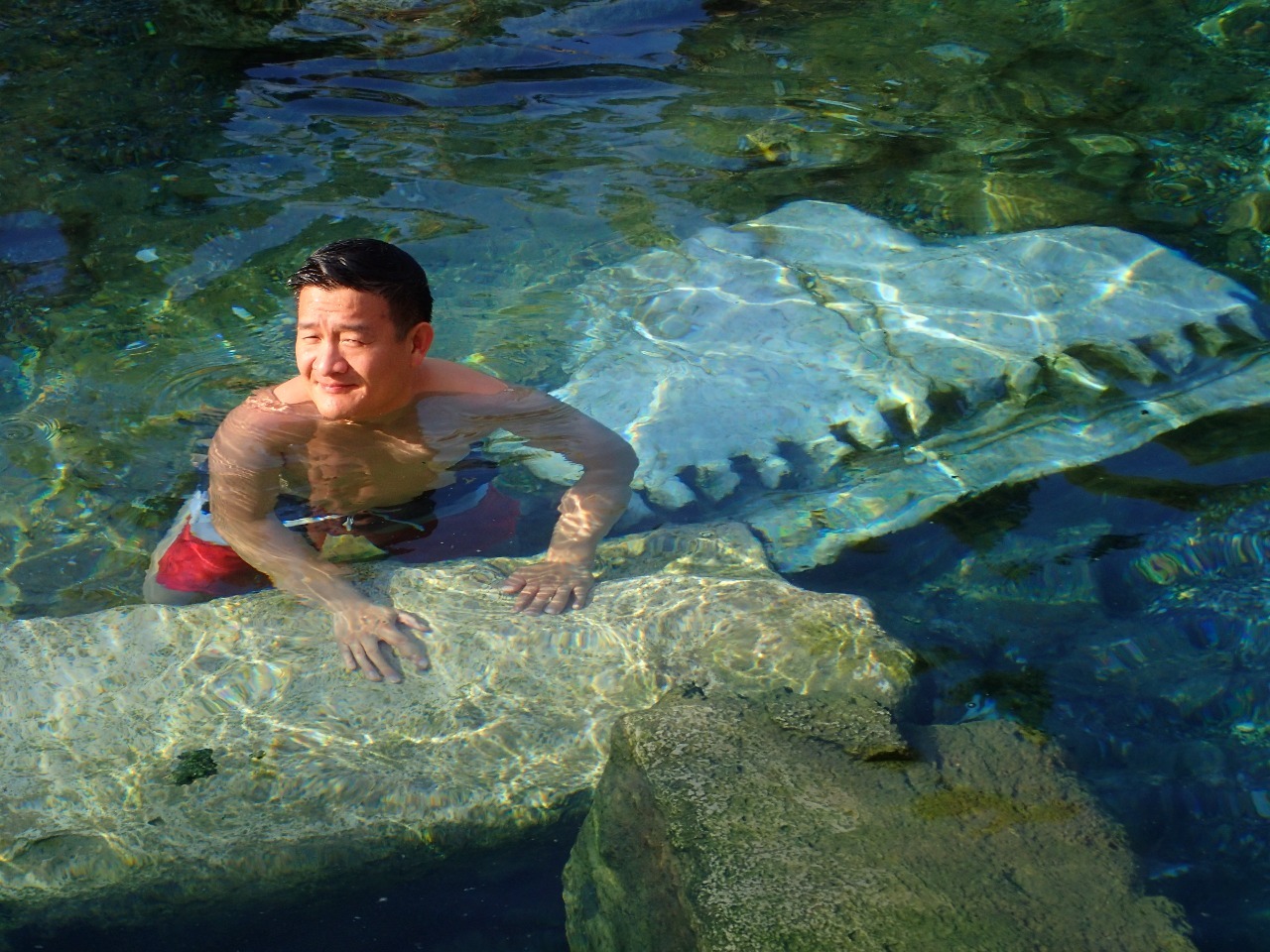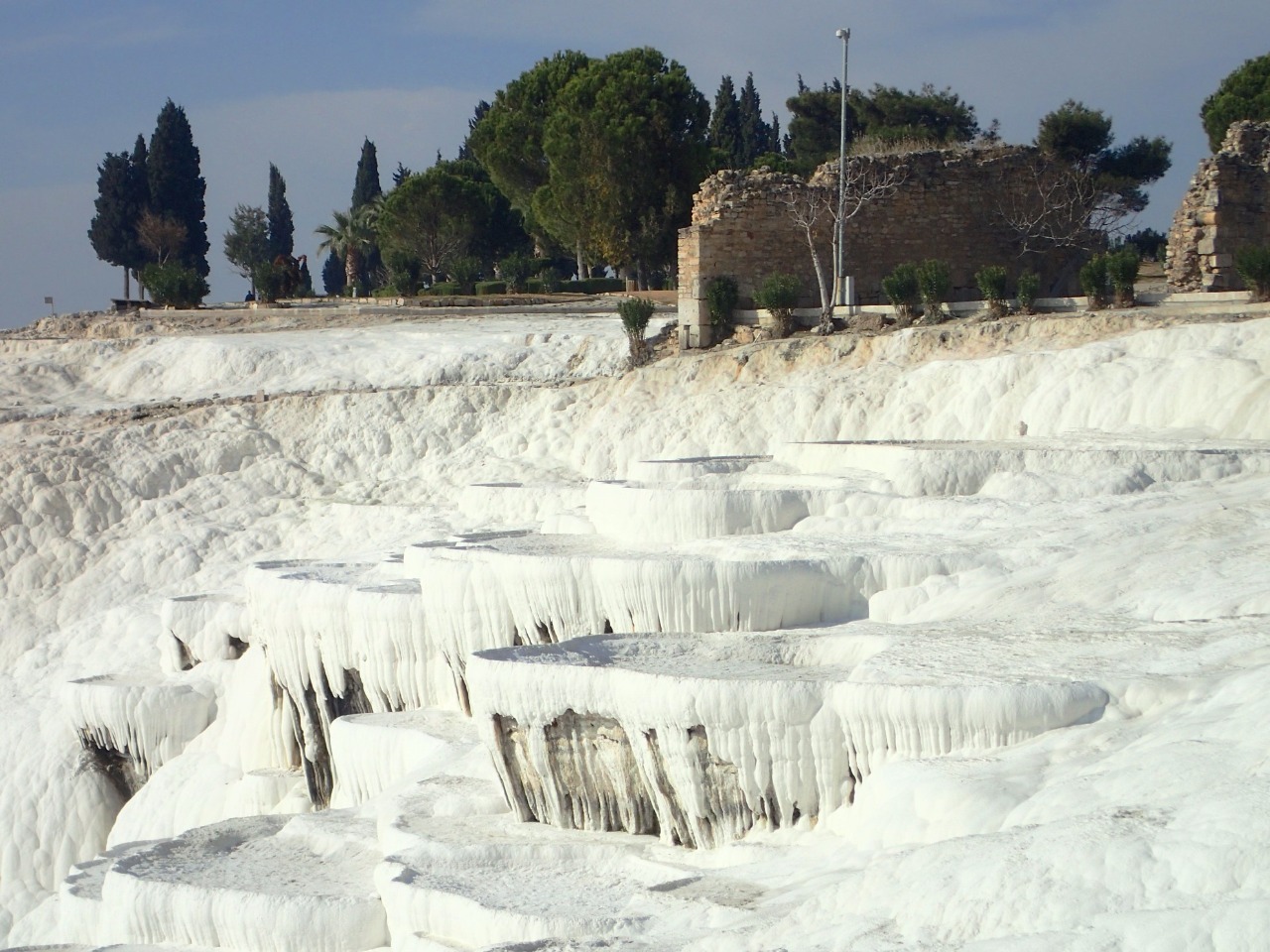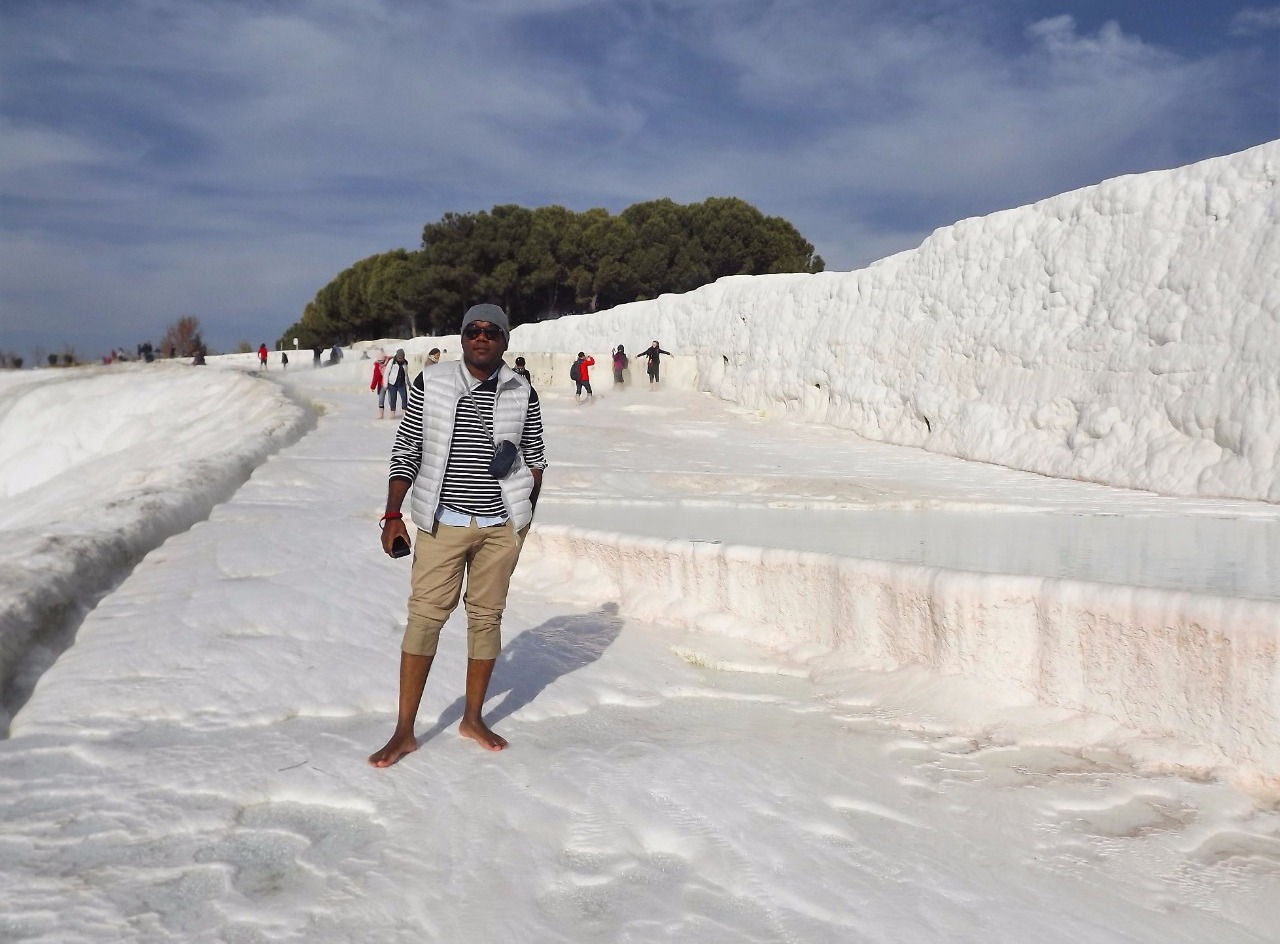To see the rest of our photos, visit my Flickr album here.
Pamukkale ("Cotton Castle" in Turkish) is a major sight in Turkey featuring a spectacular geothermal formation, and an accompanying Roman spa city - Hierapolis. Apostle Paul also traveled through Hierapolis on his many trips to spread Christianity. This was a must go in our Turkey itinerary, but its distance from Antalya - normally a 4-hour trip each way - posed a challenge. Initially we made an online booking of a two-day bus tour, but due to low interest the tour operator had to cancel the trip. Fortunately, our hotelier in Antalya - Elegance East Hotel - offered a one-day private taxi tour to Pamukkale at the same cost as the canceled two-day bus tour. We happily booked this deal since we previously received quotes for one-day private taxi tours at four times the price.
The next morning, our taxi driver picked us up and drove to Pamukkale in about two and a half hours. This was amazingly fast, in fact I saw on the speedometer that he was driving on average 70-80 miles an hour. On the way there we passed by semiarid plateaus and wide valleys behind the Taurus mountains, then the smoggy city Denizli. Anatolia was historically divided into many kingdoms due to its complex geography; these later became Roman provinces. On this day we left Pamphylia province (the Mediterranean coast south of Taurus Mountains), crossing Pisidia province (plateau north of the Taurus) and ended up in Phrygia province (inland valleys of western Anatolia).
Once at the park gates of Pamukkale-Hierapolis, our driver said he would wait there for us, and he estimated two hours for us to visit the park. I was originally thinking five hours and didn't know people normally only spend two hours at the park, so I proposed three hours instead of two. Our driver said that's fine. Three hours turned out to be not quite enough given the amount of interest Neil and I had to see every ancient ruin.
The Pamukkale-Hierapolis park is a large site containing a whole Roman city - Hierapolis of Phrygia. The Roman city was a spa town sitting on the plateau above the travertine pools cascading down the mountain. The travertine pools were formed by hot mineral springs that deposited calcite material in pearly white terraces. Down below the travertine cliffs is the village of Pamukkale offering lodging and services. The travertine pools covers a very extensive area, seemingly a bit larger than Mammoth Hot Springs in Yellowstone National Park in the USA. Like other tourists, we waded in the travertine pools barefeet, staying warm from the rushing hot spring water on a pretty cold day in the highlands. The pools are large, with beautiful pearly white walls forming an elegant staircase cascading down the mountain. Letting tourists walk in the hot spring pools is what made this a truly amazing experience, I wish park authorities in America could do the same. Later I would take a short swim in this hot mineral water like the ancient Romans.
Visiting Hierapolis, we walked for several miles through spectacular ruins all the way to the northern gate, where a huge Roman bath and a large colonnaded public toilets were adjacent to a triple-arched city gate. We found an olive oil press here among the shops lining the Roman street. Further north there were a large collection of tombs, apparently these belonged to rich people seeking cure for their illnesses at the hot springs here. Turning back toward the south gate where our taxi was waiting, we had to skip the ancient theater perched above on a hill. Instead we came to the Roman pool - this was a modern swimming area (not part of a Roman ruin) fed by hot mineral springs, and decorated with fallen marble columns. The setting was purely commercial - with food service, cafe seating, and souvenir shops. I couldn't resist swimming among ancient marble columns, so I took the plunge for a fee. It was well worth it.
Driving back to Antalya took a little over two hours, when we arrived it was time to pay our driver. We didn't have enough Turkish liras so we asked whether we could pay in US dollars. Our driver said he was fine with any currency - euros, Turkish liras, or dollars; this saved us some trouble to change money. Since we had no lunch all day but a few snacks, we went quickly to our favorite mom and pop restaurant in the Old City.
